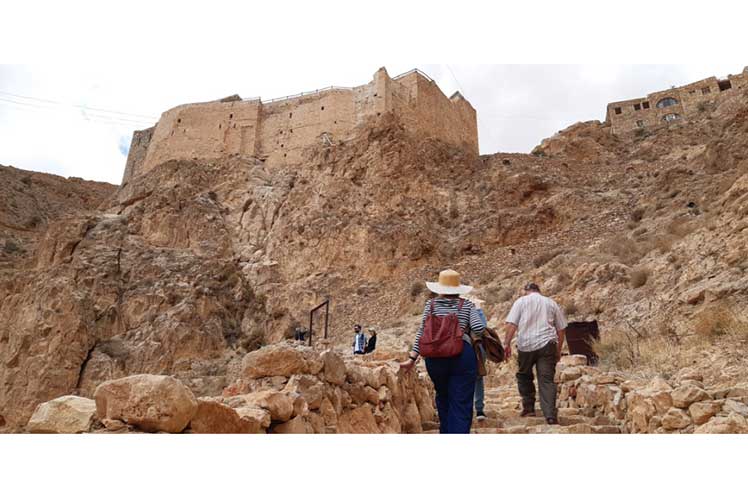The site was until 2011 the preferred destination of thousands of Syrians and foreigners who found it an ideal space to pray and meditate, and where they enjoy an unparalleled peace.

During the war years, the monastery did not suffer any direct damage, but the moral damage was great with the disappearance of Italian Father Paolo Dall’Oglio, who has been credited with its restoration in 1982 and the renewal of the monastic life; in addition, the kidnapping of Father Jacques Murad in 2015.

The monastery, whose construction lacks any kind of extravagance or decoration, includes a church that dates from 11th century, whose walls are covered with iconic figures, ancient murals and inscriptions in Arabic, Syriac and Greek languages.
In 2010, the number of visitors to the monastery reached 30,000, before this movement came to a complete halt due to the outbreak of the Syrian conflict in 2011.


At present, two monks, a nun and two young women experiencing monastic life live in the monastery. The building consists of three floors, it has rooms for visitors, a huge library, a museum and a poultry farm, from which its tenants are self-sufficient.
pgh/iff/mem/fm









